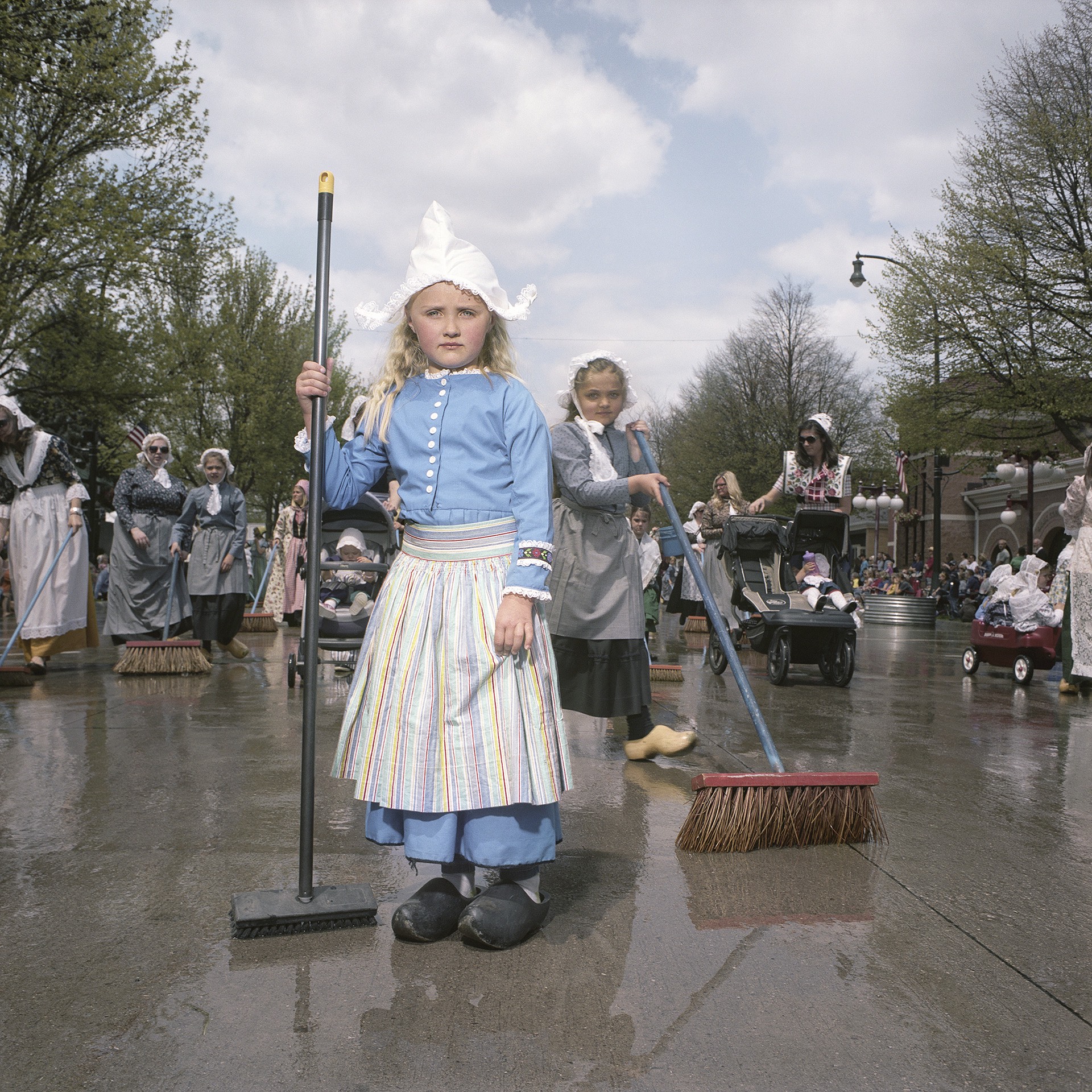How the world’s countries really see each other, in pictures
- Text by Naomi Harris
- Photography by Naomi Harris

I first had the idea for EUSA, my new book currently seeking funding on Kickstarter, when I was attending a swingers party in the mountains of North Georgia. I had time to kill, so I asked the party organiser for some suggestions of where to go. He suggested the town of Helen about 45 minutes away. I nearly breezed through the tiny tourist town but was stopped in my tracks by the gingerbread-covered buildings the dotted Main Street. This faux Bavarian wonderland had restaurants serving schnitzel and brats and stores that sold cuckoo clocks and T-shirts with Confederate Flags emblazoned on them (because this was, after all, the Deep South).
I went back to my motel and began Googling other European themed places in America. Then I searched for American places in Europe and discovered a bunch of wild west theme parks. After that, I ended up going to over 25 different events and places in both America and Europe.
I’ve been to a Maifest in Leavenworth, Washington, wild west theme parks in Germany, Italy, France and the Canary Islands, an authentic Dutch windmill in Michigan, a rockabilly festival in Hungary, a Tulip festival in Iowa, a Confederate War reenactment in the Czech Republic, and numerous Oktoberfests around the US.


My favourite place in Europe was High Chaparral, a Wild West theme park in Sweden where I did my first shoot. It was a rendezvous camping weekend held during the summer solstice, and there were hundreds of people in primitive campsites dressed in the costumes of fur trappers, Confederate soldiers and Native Americans painstakingly made to be historically accurate. No one had cell phones, digital cameras, state-of-the-art tent
In America, I was partial to the Tulip Festival in Orange City, Iowa because of the tremendous effort everyone put in to be authentic. To participate in the parade you had to be dressed head to toe in Dutch attire and even had to be pushing babies in old-timey prams. It’s also funny to photograph people in full-on Dutch costumes eating corn dogs.


I think the hardest thing to understand was the Europeans dressing as Native Americans. As a Canadian, I am astutely aware of the plight of First Nations people. Our country and government is finally taking responsibility for how these people were treated, that children were taken from their families and put in Residential Schools up until the 1980s to “kill the Indian in the child.” They were physically and emotionally abused, had their land and livelihood taken from them, forced to live on reservations, and here you have Europeans who seem totally unaware of their plight playing make-believe. While I’d say these people’s hearts are in the right place and they mean to honour the Native, it is still strange for me.


I do feel sad about the homogenization that we are currently going through because of globalisation. Sure, all societies adapt things from others and often a direct result of colonisation (pasta was invented by the Chinese, the Italians added sauce; tempura, a classical Portuguese dish was perfected by the Japanese; opium was introduced to China by the English) but we are losing our culture and the traits that make us unique. I can remember visiting Europe 25 years ago and returning with a handbag or a pair of shoes and being all excited because I’d be the only one that would have them back home. Nowadays you can either buy them at your local shop or get it off the internet.
We all wear the same clothes, eat the same foods, use the same tech gadgets. We are all consuming the same brands and becoming a member of a global consuming society. I want to go to visit a foreign land and experience what makes them different, but nowadays you’re hard pressed to go to a city and see unique, local shops. It’s all Apple stores, Starbucks and McDonald’s that look the same no matter where you are. It’s sad.











Naomi’s new book EUSA is currently raising funds on Kickstarter. Donate here.
Enjoyed this article? Like Huck on Facebook or follow us on Twitter.
You might like

Meet the Kumeyaay, the indigenous peoples split by the US-Mexico border wall
A growing divide — In northwestern Mexico and parts of Arizona and California, the communities have faced isolation and economic struggles as physical barriers have risen in their ancestral lands. Now, elders are fighting to preserve their language and culture.
Written by: Alicia Fàbregas

A new book explores Tupac’s revolutionary politics and activism
Words For My Comrades — Penned by Dean Van Nguyen, the cultural history encompasses interviews with those who knew the rapper well, while exploring his parents’ anti-capitalist influence.
Written by: Isaac Muk

Remembering New York’s ’90s gay scene via its vibrant nightclub flyers
Getting In — After coming out in his 20s, David Kennerley became a fixture on the city’s queer scene, while pocketing invites that he picked up along the way. His latest book dives into his rich archive.
Written by: Miss Rosen

On Alexander Skarsgård’s trousers, The Rehearsal, and the importance of weirdos
Freaks and Finances — In the May edition of our monthly culture newsletter, columnist Emma Garland reflects on the Swedish actor’s Cannes look, Nathan Fielder’s wild ambition, and Jafaican.
Written by: Emma Garland

Turnstile benefit gig raises $35k for Baltimore homelessness charity
Never Enough — The hardcore band also performed two new songs at Wyman Park Dell in their first live concert in nearly two years, which was organised in support of Health Care For The Homeless.
Written by: Isaac Muk

We are all Mia Khalifa
How humour, therapy and community help Huck's latest cover star control her narrative.
Written by: Alya Mooro